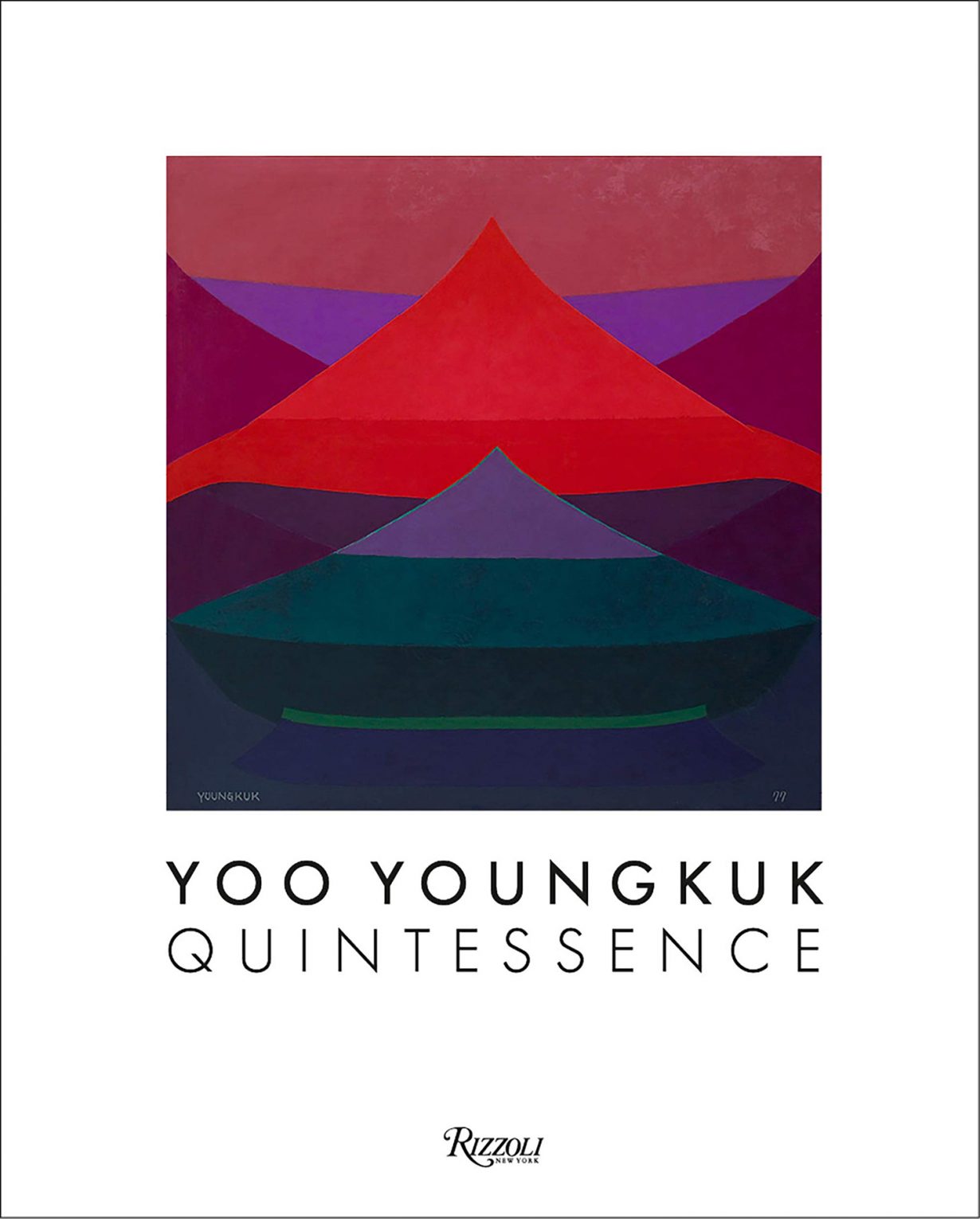
A new monograph on the Korean painter foregrounds his knack for distilling landscape into fluid visual meditations
In ancient times, the world was thought to be made up of four elements – earth, air, water and fire – that constituted all matter. Aristotle, however, posited the existence of a fifth element: a sublime and perfect substance considered as the embodiment of pure form. The notion of a quinta essentia (fifth element) persisted through the centuries, giving rise to the modern term ‘quintessence’ as a shorthand for the indelible and intrinsic spirit within all things.
A new monograph on Korean abstract painter Yoo Youngkuk (1916–2002) asserts this keyword as a framework for contemplating the artist’s keen aesthetic sensibility, granting long-awaited international recognition to an early adopter of modernism and influential figure in postwar Korean art. Boasting 213 colour plates that span the entirety of Yoo’s career as well as three new critical essays and a detailed chronology documenting his life and work, this hefty volume foregrounds Yoo’s pioneering vision of abstraction, his knack for distilling the spirit of the Korean landscape into fluid visual meditations and his visceral connection to the rugged terrain of his country. ‘The mountain is not in front of me but inside of me,’ reads a quote on the book’s back cover, a fitting aphorism for the oneness of subject and self manifested in Yoo’s extraordinary oeuvre.
Born in the hinterlands of Uljin, South Korea, Yoo departed his homeland at the age of nineteen to attend art university in Tokyo, where he explored geometric abstraction in his painting practice and played an active role in Japan’s burgeoning avant-garde scene. Yoo returned to Korea in 1943, ceased his artistic activities and began operating a fishing boat owned by his father. After Korea’s liberation from Japanese colonial occupation, in 1945, he briefly took up a teaching post at Seoul National University; however, with the outbreak of the Korean War in 1950, Yoo again made his way back to Uljin and took over his family’s soju distillery as a way of making ends meet during the lean wartime years.
It wasn’t until after the war that Yoo resumed painting in earnest, at which point the flat angular planes of colour that had characterised his early works gave way to organic forms and atmospheric spatial compositions, bespeaking a newfound engagement with the Korean landscape as his primary subject matter. In time, he settled on a restrained visual vocabulary of triangles and circles – motifs representing mountains and the sun – rendered in vibrant hues, which he arranged into harmonious amalgamations of colour and form. It was an aesthetic that would define Yoo’s practice for the rest of his career, never straying from the elemental abstraction that imbued his landscapes with a transcendental purity rarely matched in the realm of modern Korean art.
Quintessence furnishes readers with ample biographical context for Yoo’s oeuvre, thanks to the three interpretive essays. Gabriel Ritter (Head of Contemporary Art, Minneapolis Institute of Art) situates Yoo in the historical milieu of interwar Japan and the influence of his mentor Murai Masanari, before focusing on Yoo’s turn towards nature and the development of his signature style in the latter part of his career. While Ritter’s writing largely hews to the facts, Inhye Kim (curator, MMCA Korea) offers a psychological analysis of the underlying motivations that informed Yoo’s personal evolution from childhood until old age, asserting his lifelong pursuit of ‘absolute freedom’ as a defining characteristic of his distinctive painting practice. A lengthy text by Bartomeu Marí (director, Museo de Arte de Lima, Peru; former director, MMCA Korea) postulates that Yoo’s unwavering artistic conviction arose in response to shifting cultural paradigms that he encountered in his lifetime – the chaos of forced modernity during the Japanese colonial period, dire poverty and destruction wreaked by the Korean War and ideological repression of authoritarian rule in Korea during the height of Yoo’s career – and awakened his belief in building a better world, with the constancy and resilience of his country’s vast mountain ranges as a beacon of stability amid the caprices of modern existence.
Yoo Youngkuk: Quintessence, edited by Rosa Maria Falvo Rizzoli, $135 (hardcover)